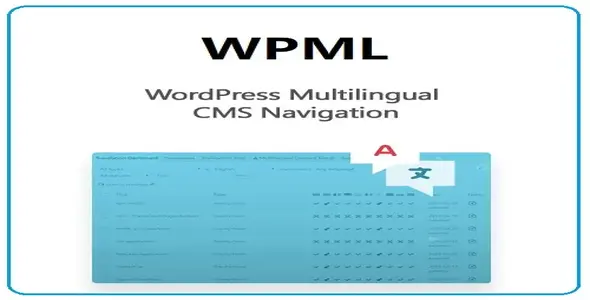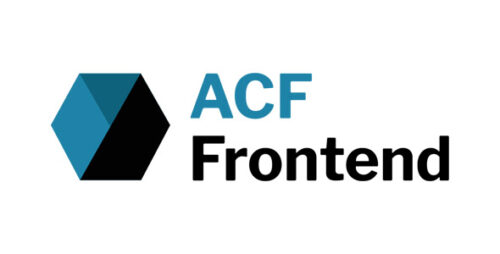WordPress Multilingual CMS Navigation 1.5.5

Product Documentation
Complete technical overview and features
WordPress Multilingual CMS Navigation
WordPress has become one of the most popular content management systems (CMS) in the world, empowering millions of websites across various industries. One of the key challenges faced by website owners is catering to a diverse global audience that speaks different languages. To address this issue, WordPress offers several multilingual plugins and solutions that allow you to create a multilingual website effortlessly. In this article, we will explore the concept of WordPress Multilingual CMS Navigation and how it can enhance the user experience of your website.
Table of Contents
- Introduction to WordPress Multilingual CMS Navigation
- The Importance of Multilingual Navigation
- Choosing the Right Multilingual Plugin
- Installing and Configuring the Multilingual Plugin
- Creating Language Switchers
- Translating Navigation Menus
- Optimizing SEO for Multilingual Websites
- Testing and Troubleshooting
- Enhancing User Experience with Multilingual CMS Navigation
- Best Practices for WordPress Multilingual CMS Navigation
- Conclusion
Introduction to WordPress Multilingual CMS Navigation
As the internet connects people from different parts of the world, it is crucial to provide a seamless user experience for visitors who speak different languages. WordPress Multilingual CMS Navigation refers to the process of creating a navigation system that allows users to switch between different language versions of your website easily. By implementing a multilingual navigation system, you can ensure that visitors can navigate your website effortlessly and access content in their preferred language.
The Importance of Multilingual Navigation
Effective multilingual navigation plays a vital role in engaging and retaining your global audience. It helps users find relevant content, products, or services quickly, reducing their effort and improving their overall experience. By offering a user-friendly navigation system, you can increase the time spent on your website, reduce bounce rates, and ultimately boost conversions.
Choosing the Right Multilingual Plugin
When it comes to implementing multilingual navigation in WordPress, selecting the right plugin is essential. There are several popular plugins available, each with its own set of features and functionalities. Some of the widely used multilingual plugins include WPML (WordPress Multilingual), Polylang, and Weglot. It is crucial to assess your specific requirements and choose a plugin that aligns with your website’s needs and goals.
Installing and Configuring the Multilingual Plugin
Once you have chosen the multilingual plugin that suits your requirements, the next step is to install and configure it on your WordPress website. The installation process usually involves downloading the plugin from the official WordPress repository or the developer’s website and uploading it to your WordPress dashboard. After installation, you can access the plugin settings and configure various language options, URL structures, and translation methods according to your preferences.
Creating Language Switchers
Language switchers are an integral part of multilingual navigation systems. They provide users with a way to switch between different language versions of your website effortlessly. Most multilingual plugins offer widgets, shortcodes, or menu items that allow you to create language switchers and place them in strategic locations, such as the header, footer, or sidebar of your website. It is important to design the language switcher in a way that is visually appealing and intuitive for users to interact with.
Translating Navigation Menus
To ensure a seamless multilingual user experience, it is crucial to translate your website’s navigation menus. Most multilingual plugins provide dedicated features to translate menus, making it easier for you to create language-specific navigation structures. You can translate menu items, assign different URLs for each language, and even customize the appearance of the menus to match the overall design of your website.
Optimizing SEO for Multilingual Websites
When creating a multilingual website, it is important to consider search engine optimization (SEO) to maximize its visibility in different language-specific search results. Multilingual plugins like WPML and Polylang offer built-in SEO features that allow you to optimize each language version of your website individually. This includes translating meta tags, titles, descriptions, and ensuring proper hreflang implementation to signal language and regional targeting to search engines.
Testing and Troubleshooting
After setting up your multilingual navigation system, it is crucial to thoroughly test and troubleshoot any potential issues. Test the language switcher, navigation menus, and content translations to ensure everything functions as intended. Pay attention to any broken links, missing translations, or layout inconsistencies that may arise during the testing phase. Regularly updating your plugins and keeping them compatible with the latest version of WordPress is also important to avoid compatibility issues and security vulnerabilities.
Enhancing User Experience with Multilingual CMS Navigation
Multilingual CMS navigation goes beyond language translation. It aims to create a user-centric experience by considering cultural nuances, user preferences, and browsing habits. Implementing features like automatic language detection, geolocation-based redirects, or personalized content recommendations based on the user’s language can significantly enhance the user experience and make visitors feel more comfortable and engaged with your website.
Best Practices for WordPress Multilingual CMS Navigation
To make the most out of your multilingual CMS navigation, here are some best practices to keep in mind:
- Keep the navigation structure consistent across all language versions for familiarity and ease of use.
- Use clear and descriptive labels for language switchers to minimize confusion.
- Optimize the performance of your multilingual website by caching translated content and assets.
- Regularly update and maintain your translation files to reflect any changes or updates on your website.
- Monitor user feedback and analytics to identify areas for improvement and optimize your multilingual navigation system over time.
Conclusion
WordPress Multilingual CMS Navigation plays a crucial role in creating a seamless multilingual user experience. By choosing the right multilingual plugin, configuring it correctly, and translating navigation menus, you can provide visitors with an intuitive and user-friendly way to navigate your website in their preferred language. Remember to optimize your multilingual website for SEO, thoroughly test and troubleshoot any issues, and continuously enhance the user experience based on user feedback. Embrace the power of multilingual CMS navigation to reach a global audience and unlock new growth opportunities for your WordPress website.
Share this product
Clean Code
Well-structured & documented
Responsive
Works on all devices
Fast Loading
Optimized performance
Support
Professional assistance
User Reviews
Community feedback and ratings
No reviews yet
Be the first to review this product!
Comments (0)
Join the discussion and share your thoughts
No comments yet
Start the conversation!
Related Products
Get This Product
Product Details
Security Verified
Clean & Safe
Scanned by 60+ antivirus engines
✓ Original files only
✓ Regular security checks



